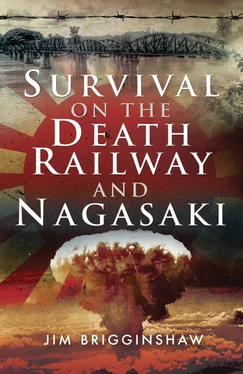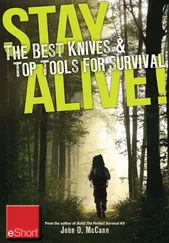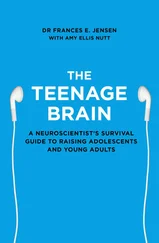Nobody owned up.
The guard commander said, ‘No man say he smoke, all men stand to attention until morning.’
Morning was ten hours away.
Fifteen minutes after the punishment began, the guard commander came out of the guardhouse and ordered the men to number off again to make sure they were all there.
Then, he selected a thick piece of timber from the woodshed. With this in his hand, he questioned the prisoners one by one.
Ray Misson, from Victoria, was first in line.
‘You smoke?’ the guard commander asked.
‘No.’ He had barely got it out before the Japanese hit him across the calves with the timber. Ray went down in a heap and stayed there.
Jim Bodero was next. ‘You smoke?’
‘No.’ Bodero was felled by the blow, and then made the mistake of climbing to his feet. He was hit again. This time he stayed down.
Third in line was tiny Tich Hyde, from Mackay, a gnome of a man called the Mad Watchmaker because he always had a magnifying glass to his eye, tinkering with the innards of a watch. Tich was asked by the guard commander if he’d been smoking.
‘No.’ Tich didn’t go down from the whack on the calves, but hopped about on one leg yelping like a belted dog. Even in the circumstances, it was a funny sight.
Bodero made another mistake. He laughed.
The guard commander turned on him. ‘You laugh at Nippon!’ He rained blows from all directions on every part of Jim’s body until Jim eventually slumped to the ground unconscious. His false teeth were broken in a dozen places, his head was badly cut and his back and ribs were quickly turning black and blue.
The vicious beating seemed to appease the guard commander, and he dismissed the rest of the prisoners without further punishment.
Bodero was carried back to the hut and attended to by Dr White, the medical officer. He was unable to stand upright for eighteen days afterwards.
The guilty smoker, Snowy Baker, escaped unscathed. Snowy was embarrassed that he hadn’t suffered when his mate had, but Jim told him he understood. He’d have kept silent too if he’d been Snowy.
Meanwhile, it had taught Bodero a valuable lesson. Never laugh in front of a Japanese on the rampage.
Despite the occasional bashing, the prisoners regarded Tamarkan as an oasis in a desert of misery. They had better food, less hard work and cleaner bodies after an issue of soap and permission to swim in the river. The improved conditions revived everyone’s hope of survival, but the Last Post, played for those who had died, was still being heard with monotonous regularity.
The luxury of swimming in the river meant sharing it with small, sharp-toothed fish with a liking for human flesh. Nobody knew what a piranha looked like, but these had to be some kind of relation. The prisoners swam naked, and many emerged bleeding and worrying they’d been risking vital parts of their anatomy that might have some bearing on their family tree if they ever made it home.
Natives caught the fish for food. Their method was to drift along the river in a boat, splashing the water with their hands. The ferocious little fish, seeing the hands as a meal, would come up to eat. As they did, the natives would drop an unbaited hook among them. The fish, hungry enough to grab anything in sight, quickly became a meal themselves.
The river also provided another welcome diversion for the prisoners-trips to Bangkok by barge to bring back supplies. Apart from the pleasant river journey, the visit to the city meant that for the first time in all their years of imprisonment they were able to scrounge some clothing to cover their bones.
By the middle of 1944 the Allied bombers flying over the camp on nightly raids on Saigon and other east coast ports encountered no Japanese fighters or other aerial opposition and were able to roam the skies unmolested.
Japanese officers, fearing that the prisoners might try to signal the bombers in some way, sent them to the camp’s outer perimeter and told them to stay there when the planes were passing overhead. They were not to look up in case the pilots saw the whites of their eyes shining in the moonlight.
The woodcutting gang was ordered to be ready to fight fires if any incendiaries were dropped. Buckets of water and bamboo poles with a rope noose at one end were placed around the camp. The Japanese told them that the noose was to be used to lasso any incendiary bombs that fell on roofs. The pole would rake down the bombs, which would be doused in the buckets of water.
They didn’t explain how bombs falling from thirty thousand feet would merely sit on top of palm thatch roofs waiting to be lassoed.
The crazy firefighting methods weren’t required, however, because Tamarkan wasn’t bombed until after the current batch of prisoners had been sent elsewhere. It meant they never learnt whether the lasso technique was effective.
Big trees just outside the Tamarkan camp were nightly roosting places for vultures. They flew off each morning, and their return coincided with the afternoon tenko (roll call) parade. First, specks would appear high in the sky, and then the ugly birds would gradually circle lower and lower until hundreds of them settled in the trees.
As they circled the parade ground just above the men’s heads, there was always some wag calling out to his mate, ‘Look out, that bastard’s got his eye on you.’
It wasn’t all jest. The scent of death was still strong among the prisoners.
In Tamarkan, coffee-making became a thriving business for Bill, a North Queenslander. It wasn’t real coffee, just scrounged rice roasted until the grains were a dark brown, almost black. With boiling water added, it was drinkable if some sweetener was available.
Bill peddled his brew around the camp calling ‘Coffee Panas, hot coffee. Who wants a cup of this delightful concoction of the Orient, this Burmese liquid sunshine?’
Bill had been a beachcomber back in his native Cairns, and his sunburnt, shrunken frame was the colour of the coffee he was selling.
‘Doovers’, rice cakes that didn’t necessarily include rice, and plug tobacco that was not necessarily tobacco, were also on sale.
The rice cakes were produced from original recipes and suspect ingredients. The plug tobacco was wild tobacco leaf smeared with chindegar sweetener and rolled tightly into a cylindrical plug. This was bound with cord and placed in the hot sun to season. Cut into thin shavings and rolled into cigarettes, the tobacco provided an acceptable smoke for those who were not too fussy.
Home brew also appeared. Stills were devised and some potent liquor came onto the market. This industry halted abruptly when, after some violent drunken brawls among the prisoners, the Australian officers ordered all stills to be destroyed.
After closing down the stills, the officers only permitted yeast to be made for medicinal purposes. Many prisoners quickly turned their hands to yeast production. They’d discovered that if enough of it was consumed, the effect was equal to that of the liquor they’d produced in the stills.
CHAPTER NINE
VOLUNTEERS – OFF TO JAPAN
IN June 1944, the Japanese command at Tamarkan issued an order. Six hundred Australian prisoners and three hundred British were to go to Japan. They would come from the main POW camps-Tamarkan, Kanchanaburi, Non Pladuk and Ban Pong.
Strangely, the Japanese called for volunteers. Jim Bodero and his mates put their hands up in the belief that nothing could be worse than what they’d been through. They were told they’d be sent to Singapore to wait for a convoy of ships to be assembled to transport them to the Land of the Rising Sun.
First stop was Kanchanaburi, where the nine hundred men were to assemble for transport by rail to Singapore. Only the fit would go to Japan, the prisoners were told. The men, all of them just skeletons, laughed at that.
Читать дальше












